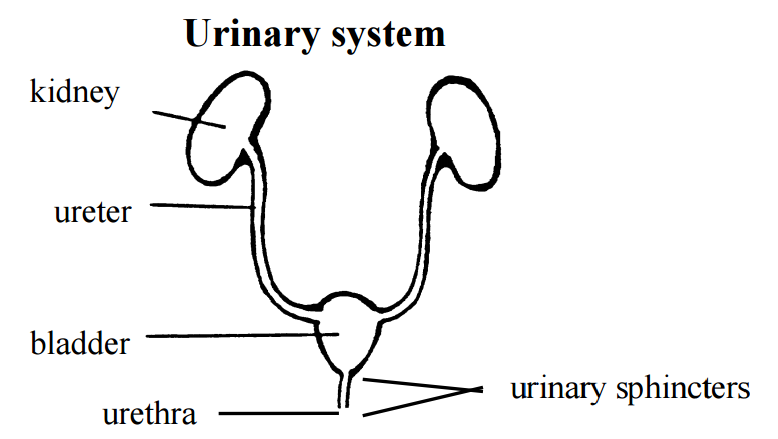Urodynamic studies
Your child is scheduled for urodynamic studies.
Date: _________________________________
Test time: _________________________________
Check-in time: _________________________________
Children's – Sedation and Procedural Services Unit
Check-in: Welcome Center – 1st Floor
2525 Chicago Avenue South
Minneapolis, Minnesota
612-813-6734
Bring your insurance card with you.
Your child will have the tests checked below:
___ uroflow study
___ electromyogram (EMG)
___ cystometrogram (CMG)
Additional appointments:
Radiology _________________________________
Doctor _________________________________
Expect to be at Children's about ½ hour for uroflow and EMG, about 2 hours for CMG and EMG, or about 2½ hours for all three. You are welcome to stay with your child during the tests. The doctor will give you the results at your appointment.
What should we do before the tests?
Read and discuss this information with your child. The nurse will call the afternoon or evening before the test to discuss any questions or concerns.
The test should not be done if your child has a bladder infection unless specifically ordered by the doctor.

As long as your child is not receiving sedation, your child may eat and drink before the test, but do not give caffeinated or carbonated beverages. These can cause bladder contractions. Juices and water are the best.
___ If your child is having a uroflow study, give plenty to drink up to 1 hour before you come. Or if your appointment is in the early morning, have your child try to hold morning urination until test time. Your child should arrive with a full bladder.
What is a uroflow study?
The uroflow study measures the amount of urine in the bladder, how long it takes to urinate, and the force of the urine stream.
How is a uroflow study done?
Your child will be asked to urinate into a commode (a portable toilet) connected to a computer. He or she may sit or stand, whichever is more comfortable. The child should not have a bowel movement or place toilet paper into the commode.
What is an EMG?
As the bladder contracts to urinate, the urinary sphincter (the muscle that controls urine flow) should relax. The EMG is done to show how well the child's sphincter muscles are working with the bladder muscle.
If your child needs this test it will be done at the same time as the uroflow and/or CMG test.
How is an EMG done?
Two skin electrodes (small sticky pads) will be placed on either side of the anus and a third electrode is placed on the thigh area. These electrodes will be connected to a computer to record muscle activity. The electrodes do not hurt. Once the test is over the electrodes are easily removed.
What is a CMG?
A CMG measures how the bladder reacts to filling. It also helps determine the degree of fullness felt during bladder filling. The test results are recorded on a computer. This gives the doctor a picture of the bladder's reaction to filling and emptying.
How is a CMG done?
A catheter (a small, flexible tube) is inserted into the bladder to fill the bladder with water. A "balloon catheter" is placed in the rectum to measure abdominal pressure. The catheters are attached to a monitor that measures pressure in the abdomen and in the bladder while it is being filled. The monitor records the bladder's activity. While this is happening your child will be asked to tell the nurse when it first feels like something is in the bladder, when the bladder feels full, and when it feels like the bladder cannot hold any more. After the test is over, the catheters are removed, unless your child is scheduled for another test requiring a catheter, such as a VCUG or RNC.
How should I prepare my child?
Explain how the tests are done, especially what your child will see, hear, and feel. Answer as many questions as you can. It is important that your child feel relaxed and comfortable so the test results are valid.
If your child is on a bowel program, please be sure to complete the program the evening before testing is scheduled.
Children may find it helpful to bring comfort items and/or a video to help them feel more comfortable.
What can we expect after the tests?
Your child may return to regular activities. Give extra liquids to drink for the rest of the day after the tests.
If your child had a catheter for the test, urinating may be uncomfortable at first. Sitting in a tub of warm water may help. (See the education sheet, "After a urinary catheter.")
When should I call the doctor?
- cloudy urine
- continued discomfort while urinating
- fever higher than 100° F
- urine smells bad
Questions?
This sheet is not specific to your child but provides general information. For questions about why your child is being tested, please ask your child's doctor. If you have questions about the test or how to prepare your child, please call the number on the front of this sheet.
Rev. 5/2018
This page is not specific to your child, but provides general information on the topic above. If you have any questions, please call your clinic. For more reading material about this and other health topics, please call or visit Children's Minnesota Family Resource Center library, or visit www.childrensmn.org/educationmaterials.
© 2024 Children's Minnesota
